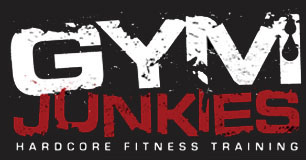Rookie and experienced weightlifters, alike, juggle a slew of fitness goals to obtain the perfect physique. As they say: The three pillars of fitness are exercise, sleep and nutrition. Unless you’re able to nail down all three, you may not find the progress you’re looking for.
So, what should you focus on first?
Well, whether you’re exercising to lose weight, grow muscle or boost your cardiovascular health—you started somewhere. While some may focus on dieting before all else, most of us turn to the same fitness pillar at the start of our journey: exercise.
We’re here to discuss the perfect ‘split’ for your exercise routines. Which exercises burn the most fat? Which exercises are ideal for muscle mass? What days should you train? By pinning down the optimal exercise split, you’ll be better equipped to reach your fitness goals.
Before covering the ideal workout split, though, let’s check out one of the most important factors which power—in our opinion—the best workout split around.
Finding Your Foundation For Your Best Workout Split: Strength Training
Strength training is a vital component of your lifting split plan—no matter what your goals are. Also known as weight resistance training, strength training prioritizes the improvement of muscular fitness. How is muscular fitness achieved? While many swear by fad workout regimens, niche lifting schedules and obscure routines—the key to muscular fitness is, more or less, always the same.

Resistance Training Overload
Resistance training overload certainly sounds like a complex term, doesn’t it?
Fear not: It’s a pretty simple process. Basically, you need to prioritize getting stronger by doing at least one of the following, according to wellness physiologists:
- Strive to lift more weight than you did before.
- Strive to complete more repetitions than you did before.
- Strive to achieve a higher volume of overall weight than you did before.
Of these three things, the first is often the most important. Lifting more weight, overall, will garner higher degrees of athleticism. The overload of strength training has outcomes which apply to every level of fitness, too. So, whether you’re a novice or an experienced lifter, the rules stay the same.
Why Strength Training Matters the Most
While cardiovascular exercise, mobility training and endurance training certainly have their uses—strength training matters the most. In short: You should always be trying to lift heavier weights, assuming your repetitions stay constant.
Universally, the best workout split follows the progressive overload principle.
By crafting a routine which prioritizes reps in the 5-8 and 8-12 ranges, you’ll approach your goals the quickest. Most professionals recommend doing three exercises, per trained muscle, in your workout. So if you’re exercising chest and triceps—that’s three exercises for chest, and another three for triceps. We’ll cover exercise sets later, though. Before we dive into sets, muscle groups, and weekly workout splits, there’s something else needing to be addressed.
The Weight Loss and Pyramid Fallacies
To better explain why strength training will determine the base of your workout split, let’s examine some other fitness goals which—at first glance—don’t seem like they’d benefit from constant training overload.
First up is cardiovascular exercise. Many gym-goers, unfortunately, consider cardio to be the primary tool for shedding fat. Sure, cardiovascular exercise helps—but prioritizing cardio, or even long sets with many reps, will hinder your overall fitness goals. That’s right: Whether you’re training for strength, size or fat loss, strength training is the most effective regardless.
So, why is this the case? Well, hang on—because the reason spawns from a deceptive, although common, outlook on cardio. Cardio burns calories—but it’s nothing compared to a good diet.
The Weight Loss Fallacy
To lose fat, you need to spend more calories than you consume.
It’s that simple—and no amount of exercise can replace this fundamental aspect of fat loss. You can take a 20-minute run on the treadmill, burning roughly 200 calories. Or, you can crank out a 20-minute interval weightlifting session which can burn as much as 15 calories per minute. But these exercises approach fat loss in an inefficient way when a weight loss diet is part of the picture.
Rather than spending most of your gym session doing pull-ups, burpees, lunges and sprints—you should maximize the time spent lifting weights within the 5-8 and 8-12 repetition ranges. The reason for this, of course, isn’t readily obvious up front: You need to preserve muscle mass while you’re shedding fat.
Remember: Heavy cardiovascular and high-repetition exercises burn calories—but not many. You’re much better off eating at a caloric deficit, or in a way which causes your body to spend more calories than it consumes.
To do so, you’ll need to use Calorie Calculator—or a similar food energy converter—to figure out how much you need to eat to maintain consistent weight loss. If you stay under your daily calories—that’s it! Technically, you don’t even need to exercise. Fat loss will occur on its own, as long as you have a caloric deficit.
Understandably, cardio and high-repetition exercises can give you a little more leeway when trying to stay under your daily calorie limit.
This said, they also do something else: They don’t preserve muscle mass nearly as well as strength and mass training exercises do. Because diet is the driving factor for fat loss, it can be difficult to maintain your muscles while losing fat. Sometimes, your body simply reduces both.
As such, you’ll need to prioritize progressive overload lifts as much as possible. Why, exactly? Because these exercises normally have the highest impact on muscle strength and growth. If you’re trying to lose weight, however, they’re the golden standard for maintaining your hard-earned muscles.
Think of it like this: Rather than approaching a fat loss routine head-on, burning roughly 200-500 calories on cardio and high-repetition exercises, approach the problem from a more economical avenue. Focus on diet first, because simple eating schedule changes can spare you countless cardio hours in the gym.
In exchange for these cardio hours, focus on progressive overload strength training—which will better conserve your muscles than high-repetition exercises. Heck, you might even gain muscle during your weight loss period.

The Pyramid Set Fallacy
Now that we’ve determined the base of your workout split (relatively heavy lifts which should get heavier as you progress) it’s time to acknowledge another weightlifting ‘problem area.’ Much like the fat loss misconception, this problem area is surprisingly difficult to notice. In fact, most weightlifting regimens suggest doing the opposite of the most effective routine.
In weightlifting, there’s something called pyramid sets. These exercises are incredibly common—and, chances are, you probably already do them. Pyramid sets increase in weight as they decrease in repetition throughout. They look something like this:
- Set One: Bench press 135 x 10 reps.
- Set Two: Bench Press 145 x 8 reps.
- Set Three: Bench Press 155 x 6 reps.
Seem familiar? Again, this approach to weightlifting is one of—if not the most—common approaches around. It’s also not the best foundation to reach your goals—whether they’re to lose weight or focus on muscle growth.
Woah, wait a minute: They’re not efficient for either goal? Nope.
There’s a reason we mentioned the fat loss myth earlier: It ties into the pitfall of pyramid sets. There’s also a reason pyramid sets aren’t the best workout split foundation for any goal. Before we cover what is the best all-around repetition base to power your workout split, let’s take a closer look at both the fat loss and pyramid set fallacies together. Doing so really is important: As understanding the upcoming key details is vital to crafting a supercharged workout split, whether you’re trying to burn fat or gain muscle mass.
The Secret to Top-Tier Fitness Results
By now, it’s obvious that a regular workout split foundation, rep-wise, isn’t going to cut it. Before we go further, however, something needs to be said: There’s nothing inherently wrong with high-intensity interval training (HIIT), cardio-heavy workouts or high-repetition exercises. They increase body mobility, promote lean muscle mass, enhance heart health, and protect your joints and ligaments.
This said, there’s one approach to high-tier fitness results which arguably surpasses these approaches. It’s highly effective, and it works incredibly well as both a muscle growth and weight loss foundation. Why is it so effective? Well, it acknowledges the inherent flaws of both fat loss routines and strength training routines. From this point forward, remember three golden rules regardless of your fitness goals.
- To gain muscle mass, you need to overload. Try to lift heavier than you did before.
- To lose weight, dieting and calorie counting blow cardio out of the water. Prioritize them.
- Whether you’re bulking up or slimming down, maintaining muscle mass is a priority.
Here’s a question: When combined, what do these three rules suggest?
They suggest that, regardless of your goals, you need to constantly focus on muscle mass. If you’re bulking, you need to eat plenty of protein and lift heavy weights. If you’re trying to lose fat—not weight, as losing weight means your body is consuming itself—you absolutely must, at the very least, maintain your current muscle mass. If you don’t, your body won’t burn fat during a caloric deficit. It’ll consume muscle—which isn’t good, because muscle mass, alone, burns fat over time.
But here’s the real secret: The real goal, a goal which many overlook, is energy conservation. Specifically, it’s energy conservation for heavy lifting. See how everything falls into place? To gain or maintain muscle, you need to lift heavy. To lift heavy, you need energy—and plenty of it. You know what drains a person’s precious heavy lifting fuel more than anything else? It’s a trick question, because there’s two answers:
- Doing pyramid sets which build up to your maximum 5-8 repetition range.
- Cardio, high-repetition exercises, and anything else which isn’t low-rep resistance training overload.
To put it simply: Spend your strength, endurance and flexibility on heavy lifts. Don’t build up to your 5-8 rep range with a pyramid set. Your final set—which should be the heaviest—won’t be as good as it could be. Thus, you won’t gain as much muscle. Many fitness programs overlook this aspect, but it’s vital to crafting the ultimate workout split. Figure out your maximum lifting potential for the 5-8 rep range.
Then, try to lift this during every set.
Warm up, of course, because it’s important—but don’t do anything which empties your fuel tank. Don’t build up to your 5-8 rep potential.
Push for full potential right out of the gate.
Likewise, don’t spend vital energy on cardio if you’re trying to lose weight. Prioritize muscle growth. Prioritize the same maximum lift potential for 5-8 reps. Yes, this might mean you spend less time in the gym. It might mean you sweat less. But don’t worry: 80% of your weight loss will come from diet management. When you’re in the gym, you only need to worry about muscle mass. If you’re dieting, you may not be able to lift as much. Still, you need to try.
If you turn to high-repetition exercises, you’ll fail to even maintain your current muscle mass.
The Workout Split: Reps
Now that you know the secret behind muscle growth and fat loss efficiency, you can establish a powerful split. Remember: Your ultimate goal is to save as much energy as possible, lift heavy and constantly pursue new PRs.
Here’s where volume comes into play.
Basically, hitting the same muscle with not only high weight—but as many reps as possible—is important. This is why the most efficient rep range is between 5 and 8 reps. If you do 3 to 5 sets—each containing 5 to 8 reps—and if each set’s weight is at your maximum capacity for that rep range? You’ll hit your muscles hard, and you’ll hit them many times. As a rule of thumb, your primary muscles—your back, chest and legs—should receive between 30 and 60 overall reps when they’re exercised. Accessory muscles, such as biceps, triceps and shoulders, only need half as much.
The Workout Split: Weekly Exercises
Alright: Let’s get to the good part. What will your weekly exercise breakdown look like? Again, it’s a good idea to focus on volume once you’ve squared away your routine’s overload needs. Thus, you should try to hit every muscle—or at least your primary muscles—at least twice per week.
Targeting these primary muscles with compound lifts, like bench press, deadlifts and squats, will automatically stimulate your secondary muscles. Again: You’re going to be lifting heavy. Fortunately, your gym sessions will be swift due to the high-impact reps you’ll be doing. Check out the example weekly exercise breakdown below which is divided between three types of exercise: push, pull and legs.
Monday: Push
Chest Exercise One: Flat Bench Press, 5 sets x 5 – 8 reps per set.
Chest Exercise Two: Incline Dumbbell Press, 5 sets x 5 – 8 reps per set.
Chest Exercise Three: Dumbbell Flyes, 5 sets x 8 – 12 reps per set.
Triceps Exercise One: Skullcrushers, 5 sets x 8 – 12 reps per set.
Triceps Exercise Two: Overhead Lifts, 5 sets x 8 – 12 reps per set.
Triceps Exercise Three: Chord Pull-downs, 5 sets x 8 – 12 reps per set.
Tuesday: Pull
Back Exercise One: Deadlifts, 5 sets x 5 – 8 reps per set.
Back Exercise Two: Seated Rows, 5 sets x 5 – 8 reps per set.
Back Exercise Three: Lateral Pull-downs, 5 sets x 8 – 12 reps per set.
Biceps Exercise One: Preacher Curls, 5 sets x 8 – 12 reps per set.
Biceps Exercise Two: Incline Dumbbell Curls, 5 sets x 8 – 12 reps per set.
Biceps Exercise Three: Hammer Curls, 5 sets x 8 – 12 reps per set.
Wednesday: Legs
Legs Exercise One: Squats, 5 sets x 5 – 8 reps per set.
Legs Exercise Two: Leg Press, 5 sets x 5 – 8 reps per set.
Legs Exercise Three: Leg Extensions, 5 sets x 8 – 12 reps per set.
Thursday: Rest Day
Friday: Push
Chest Exercise One: Flat Dumbbell Press, 5 sets x 5 – 8 reps per set.
Chest Exercise Two: Incline Bench Press, 5 sets x 5 – 8 reps per set.
Chest Exercise Three: Dumbbell Flyes, 5 sets x 8 – 12 reps per set.
Triceps Exercise One: Kickbacks, 5 sets x 8 – 12 reps per set.
Triceps Exercise Two: Overhead Lifts, 5 sets x 8 – 12 reps per set.
Triceps Exercise Three: Closed-Grip Bench Press, 5 sets x 8 – 12 reps per set.
Saturday: Pull
Back Exercise One: Deadlifts, 5 sets x 5 – 8 reps per set.
Back Exercise Two: Reverse-Grip Pull-downs, 5 sets x 5 – 8 reps per set.
Back Exercise Three: Pull-ups, 5 sets x 8 – 12 reps per set.
Biceps Exercise One: Hammer Curls, 5 sets x 8 – 12 reps per set.
Biceps Exercise Two: EZ Bar Curls, 5 sets x 8 – 12 reps per set.
Biceps Exercise Three: Preacher Curls, 5 sets x 8 – 12 reps per set.
Sunday: Legs
Legs Exercise One: Squats, 5 sets x 5 – 8 reps per set.
Legs Exercise Two: Leg Press, 5 sets x 5 – 8 reps per set.
Legs Exercise Three: Goblet Squats, 5 sets x 8 – 12 reps per set.
Conclusion
And there you have it! Because we’re prioritizing those heavy 5-to-8-rep lifts up front, the following lifts are a little lighter—ranging between 8 and 12 reps. Get ready, dial in your diet and get plenty of recovery rest—because this workout split is guaranteed to put you in awesome shape.
-Terry Asher
Terry Asher
Latest posts by Terry Asher (see all)
- Better Family – Product Review Liquid Daily 2 oz - Dec 16, 2024
- Post-Workout Recovery: The Key to Optimal Performance - Nov 25, 2024
- Pre-Workout Supplements – Everything You Need To Know - Nov 18, 2024











[…] post The Best Workout Split appeared first on Gym […]
[…] post The Best Workout Split appeared first on Gym […]
[…] Read The Entire Article By Terry Asher Here. […]
You have given awesome advice! I love power lifting to exhaustion rather than more reps to get toned. It saves time and you see results way faster and better. Thank you for the suggested daily workout split to get strong!
[…] post The Best Workout Split appeared first on Gym […]
We should be aware of the important points in this article about this best workout split. This would really mean a lot. Thanks for sharing this one out.